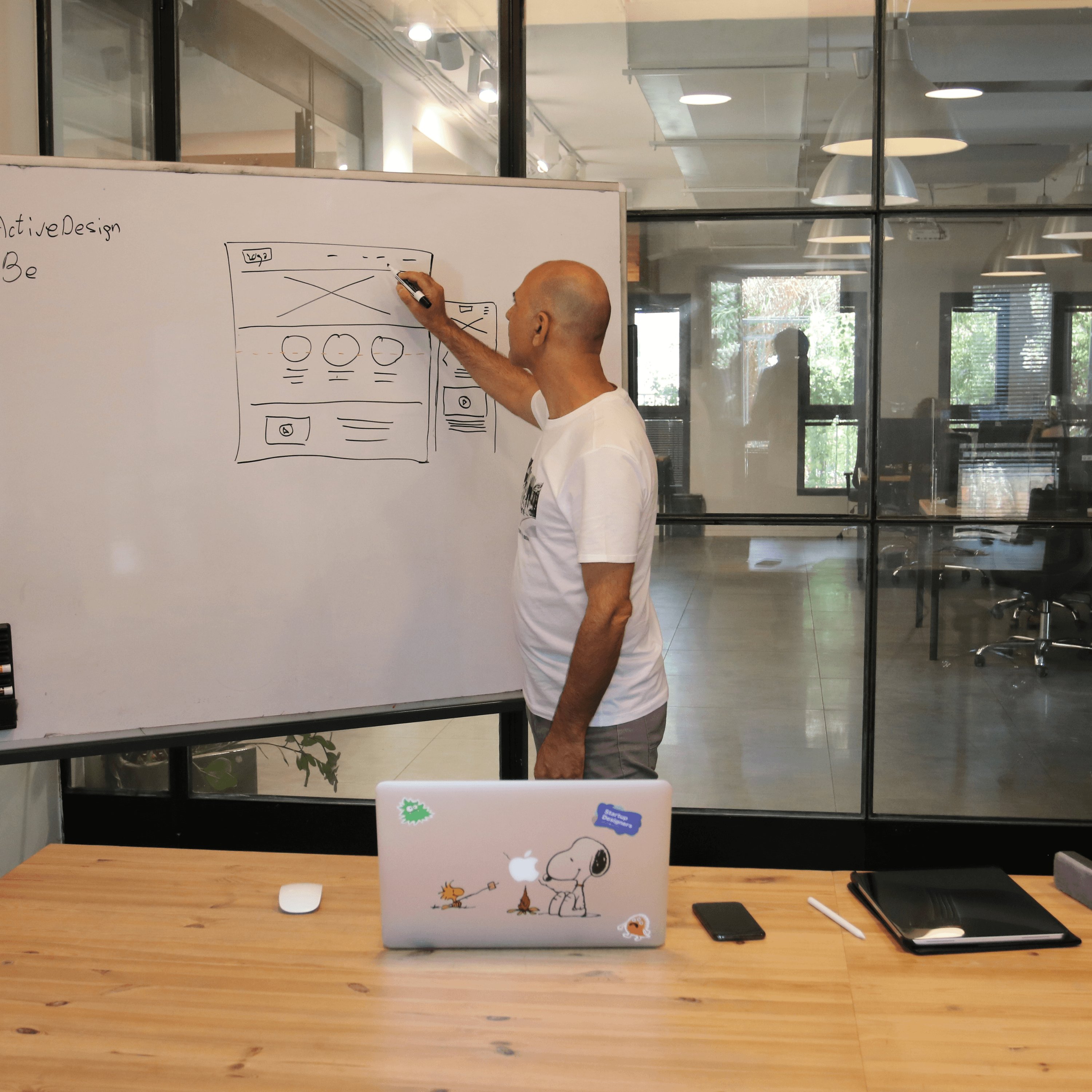Software Services
For Companies
For Developers
Products
Portfolio
Build With Us
Build With Us
Get Senior Engineers Straight To Your Inbox

Every month we send out our top new engineers in our network who are looking for work, be the first to get informed when top engineers become available

At Slashdev, we connect top-tier software engineers with innovative companies. Our network includes the most talented developers worldwide, carefully vetted to ensure exceptional quality and reliability.
Build With Us
Agile Work: The Preferred Choice of Top Professionals and Why You Should Consider It Too/


The modern workforce is in constant flux, and professionals across various industries are looking for greater flexibility and variety in their careers. Financial analysts and software developers, among others, are some of the best professionals in the world, and companies are vying for their attention. Unfortunately, recruiting and retaining high-quality talent is one of the biggest challenges facing businesses today. According to a survey of global business leaders, 78% of respondents view talent acquisition as a primary risk to organizational success.
This talent shortage is pervasive across industries, and even when companies manage to recruit top talent, they often fail to retain them for long. In fact, Jobvite’s recruiter survey found that 30% of new hires have a tenure of fewer than three years. High employee churn and scarce talent come at a significant cost to organizations, with an average of 43 days taken to fill an open software developer role and resulting in tens of thousands of dollars in costs from productivity loss and recruiter salaries. Furthermore, disengaged employees cost organizations between $450 and $550 billion every year.
To reduce the cost and volume of recruitment challenges and to retain top talent, companies are turning to agile work. Agile talent is flexible, high-level, and able to adapt to the evolving demands of modern work. Agile work also appeals to professionals who are seeking greater variety and flexibility in their careers. Companies are increasingly recognizing the benefits of hiring agile talent, with 91% of surveyed organizations stating that they are using high-level agile talent.
Continuing with this trend, agile work is seen as a means to advance knowledge, expertise, and careers. Agile work can provide professionals with access to diverse experiences and learning opportunities that can help them acquire new skills, broaden their knowledge base, and advance their careers. Companies that embrace agile work and create an environment that supports it are more likely to attract and retain high-quality talent.
Why Compensation and Benefits Aren’t As Important for Top Professionals

In today’s highly competitive job market, savvy organizations need to find new ways to attract and retain top talent. Offering attractive compensation and benefits packages used to be the go-to strategy, but it’s no longer enough to set your company apart. Not only is it expensive, but studies have shown that these tactics don’t have a significant impact on employee retention. Instead, top professionals value workplace preferences such as variety, flexibility, and opportunities for development and advancement. In this article, we will explore these key values and explain why an agile work model is the best way for organizations to attract and retain the best talent.
1. Variety
According to surveys, even highly compensated and engaged employees are still looking for new work experiences. The desire for variety is a significant factor that drives top talent to seek agile opportunities. By embracing and even encouraging agile engagements with high-performing professionals, organizations can harness the most talented workers. Agile talent can manage their own workload and have the flexibility to learn new skills, select projects based on their interests, and obtain access to a host of additional cultural and physical benefits. Enterprises that offer diverse work opportunities and facilitate agile engagements can set themselves apart from their competitors and make themselves more appealing to skilled professionals.
2. Flexibility
The changing nature of work is the single largest driver of business change in the 21st century, and remote work has become more prevalent with the help of enterprise collaboration tools. Recruiting talent from a wider geographical area allows organizations to provide highly attractive compensation to top talent while saving money compared to local market rates. A recent survey found that 45% of respondents expect remote work to significantly increase in the next two years. Enterprises that offer top talent the freedom and flexibility to work when and how they want can gain a significant competitive advantage.
3. Opportunity to Develop and Advance
Top professionals care about advancing their careers, and opportunities to learn and grow are one of the most important aspects of workplace culture. Agile talent has the advantage of managing their own work schedule, allowing them to attend more workshops, conferences, and training courses than full-time employees. This can help them fast-track their knowledge and networking, crucial attributes for agile talent. Top talent prefers agile work because it provides unique opportunities for career growth. By working for a diverse array of teams and leaders, professionals develop adaptable, tangible, and transferable soft skills in the workplace, while burnishing their portfolios and resume with projects from a variety of companies and verticals.
Give Top Professionals What They Want – Agile Work

In the fiercely competitive world of talent recruitment, savvy organizations are recognizing that providing top professionals with what they value is key to attracting and retaining the best talent. Traditionally, companies have offered everything from attractive compensation and stock options to health insurance, lifestyle perks, and even personal mentorship from top executives. However, competing solely through salary and benefits is not as effective as it once was, with research showing that they do not necessarily translate into employee loyalty.
Top professionals now value dynamism, which includes variety, flexibility, and advancement opportunities, more than a rigid system that solely focuses on compensation and benefits. Agile engagements that allow professionals to manage their own workload, select projects based on their interests, and obtain access to a host of additional cultural and physical benefits are now highly valued. These new priorities have evolved alongside collaboration technology, organizational best practices, and demographic shifts over the past decade.
To achieve durable success in recruiting top professionals, it is vital for organizations to understand that their desires and qualities have evolved, and adapt accordingly. Enterprises that adopt agile approaches to fulfill the career goals of the top talent in new and exciting ways will outperform in finding talent. This approach can give organizations a competitive advantage, as it allows them to provide talent with greater freedom and flexibility to get work done in their own way, while also saving money on compensation costs.
Evidence from various talent and recruiting sources, as well as survey data, supports the notion that the best way to attract talent is to pay attention to what top professionals actually want. While some factors, such as the charisma of a founding CEO or the appeal of a company’s mission and products, may be out of an organization’s control, they can still play to the objectives of top talent by offering agile engagements. By embracing the desire for top talent to avoid stagnation and explore a variety of new work opportunities, organizations can employ and harness the most talented workers.
Conclusion
In conclusion, attracting and retaining top tier professionals is becoming increasingly challenging for businesses, with talent acquisition being viewed as a primary risk to organizational success by 78% of global business leaders. This, combined with high employee churn and scarce talent, comes with a significant cost to organizations. Offering attractive compensation and benefits packages is no longer enough to woo highly skilled professionals, who are now valuing variety, flexibility, and opportunities for career advancement in a work environment that allows them to manage their own workload. Agile work is becoming the new order of the day, with enterprises that adopt this approach being able to attract and retain top talent by fulfilling their desires and evolving qualities. By embracing the desire of top talent to avoid stagnation and explore new work opportunities, enterprises can employ and harness the most talented workers, resulting in a more agile and successful organization overall.

